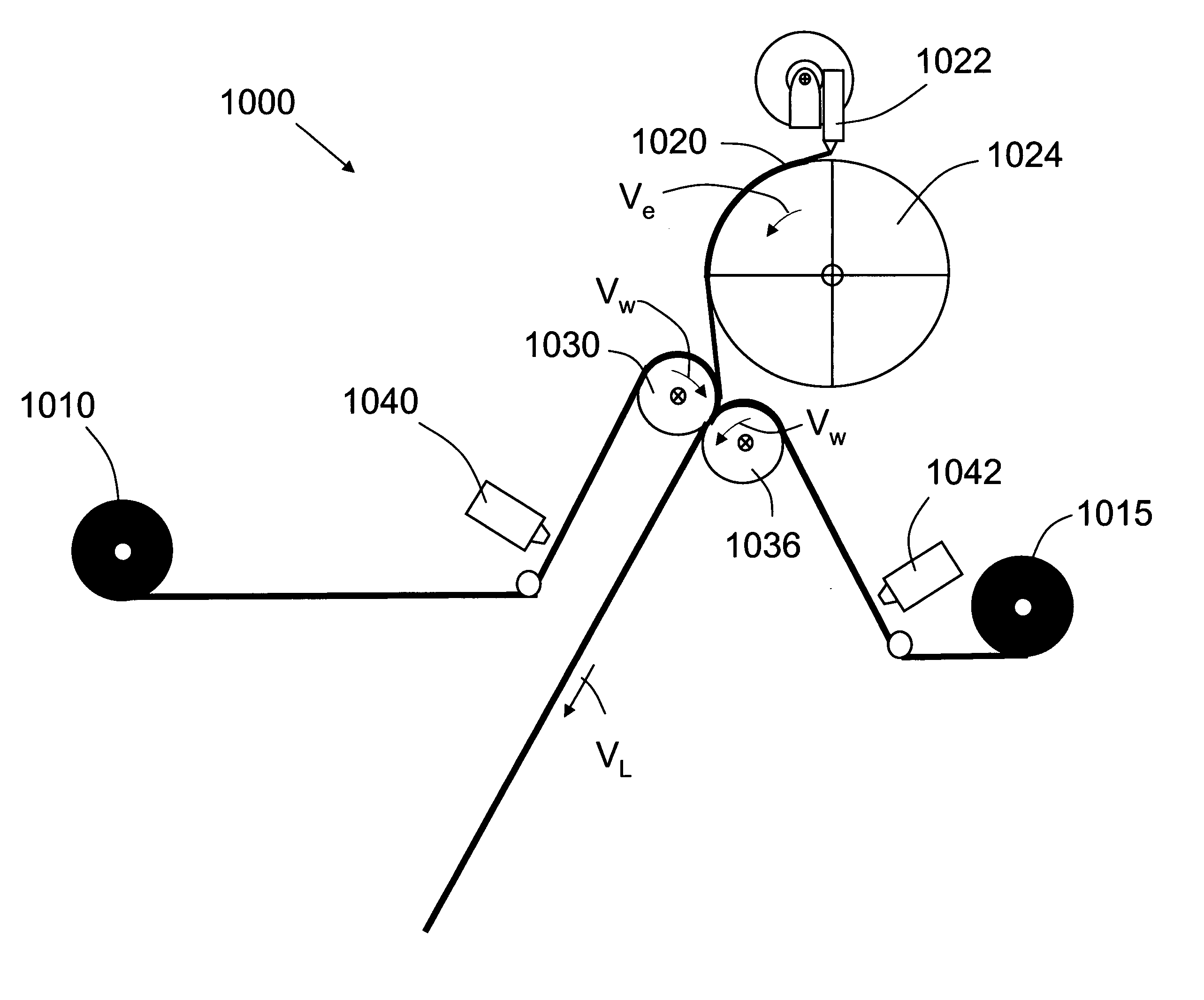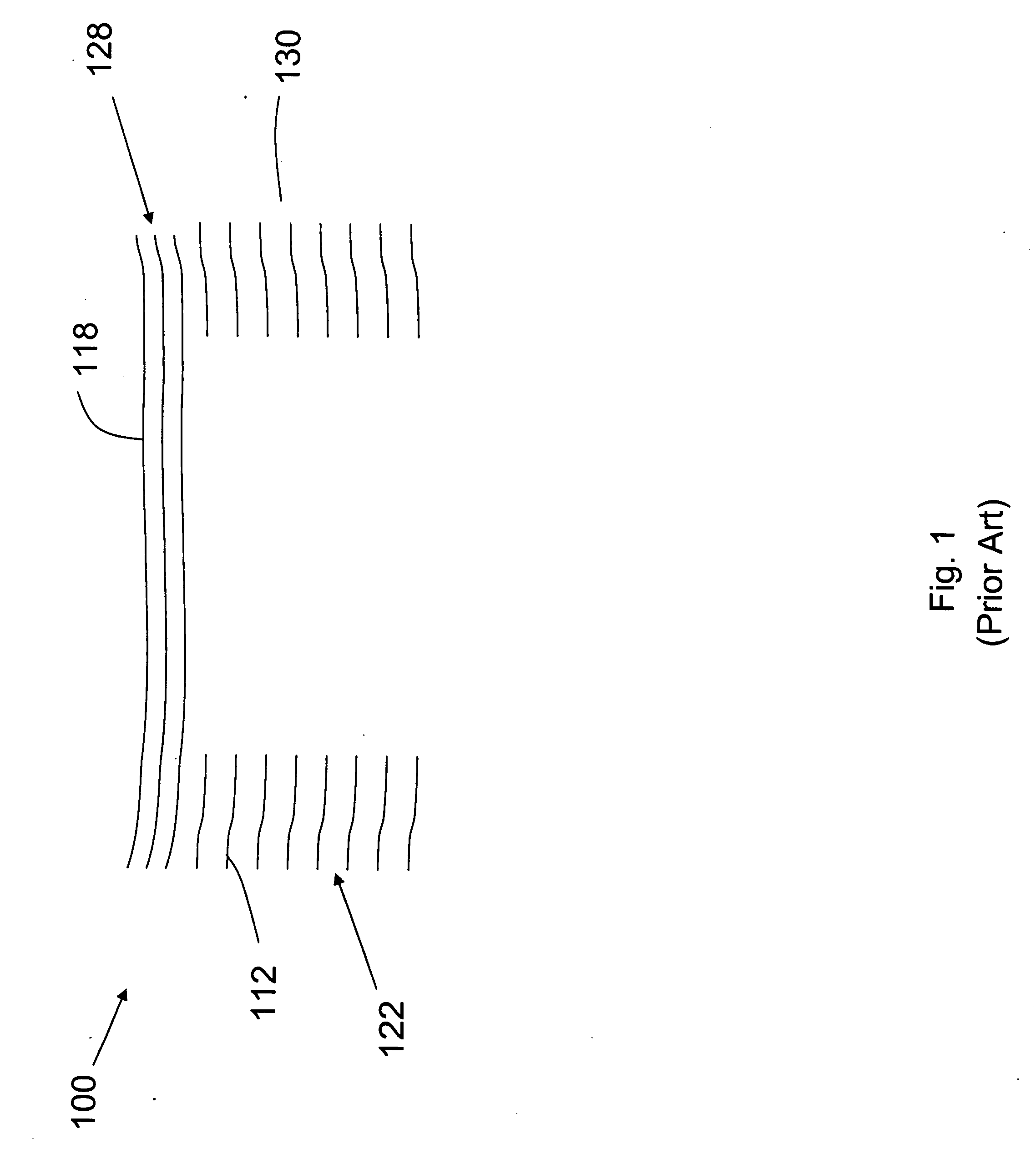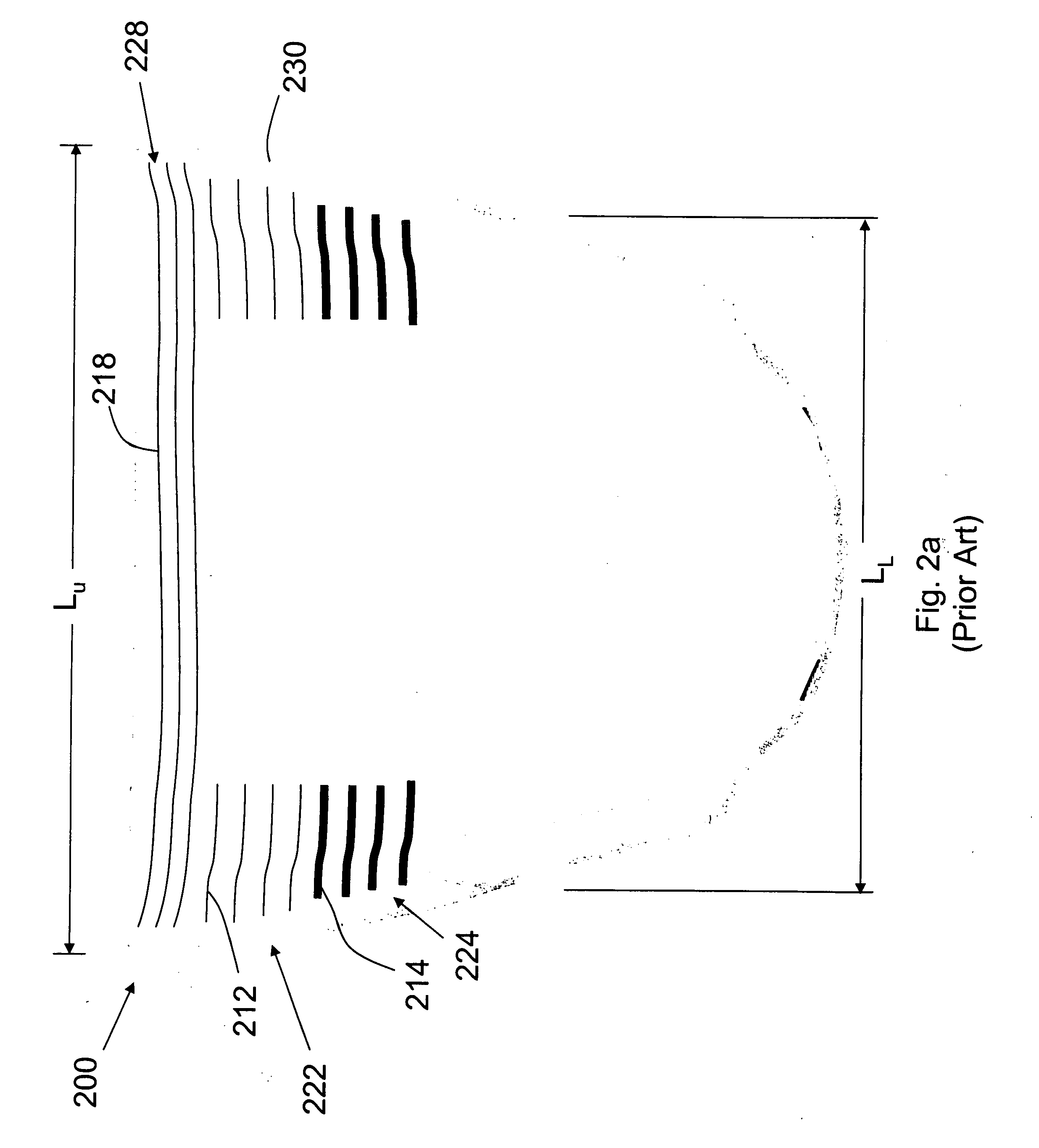Method for producing a laminate having varying pre-strained elastics
a technology of elastics and pre-strained elastics, applied in the field of elastic-based elastic-based elastic-based elastic-based elastic-based elastic-based elastic-based laminates, can solve the problems of product design limitations, unreliable elastic-based material webs, and not linear laminates
- Summary
- Abstract
- Description
- Claims
- Application Information
AI Technical Summary
Benefits of technology
Problems solved by technology
Method used
Image
Examples
examples
[0082]FIG. 14 depicts an exemplary laminate 6080 within the prior art. Laminate 6080 may be constructed from elastics (e.g., made of a block copolymer supplied by Kuraray under the trade name KL 2014) tensioned and sandwiched between two layers of 10 gsm SMS polypropylene nonwoven (e.g., supplied by Avgol). An adhesive (not shown) may be used to laminate the two layers together (e.g., 3 gsm; Findley H 2031). Upon relaxation of the tension in the elastics (e.g., 6012, 6014), the nonwoven will form gathers 6015.
[0083] More specifically, laminate 6080 may be constructed of a series of first elastics 6012 and a series of second elastics 6014. Elastics 6012 have an elastic basis weight of about 20 gsm when measured in the relaxed laminate. Elastics 6014 have an elastic basis weight of about 70 gsm when measured in the relaxed laminate. Elastics 6012, 6014 are similarly spaced apart 2.5 mm from each other.
[0084] Assuming that elastics 6012 were produced under a process strain of 4.0 (i....
PUM
| Property | Measurement | Unit |
|---|---|---|
| Length | aaaaa | aaaaa |
| Length | aaaaa | aaaaa |
| Length | aaaaa | aaaaa |
Abstract
Description
Claims
Application Information
 Login to View More
Login to View More - R&D
- Intellectual Property
- Life Sciences
- Materials
- Tech Scout
- Unparalleled Data Quality
- Higher Quality Content
- 60% Fewer Hallucinations
Browse by: Latest US Patents, China's latest patents, Technical Efficacy Thesaurus, Application Domain, Technology Topic, Popular Technical Reports.
© 2025 PatSnap. All rights reserved.Legal|Privacy policy|Modern Slavery Act Transparency Statement|Sitemap|About US| Contact US: help@patsnap.com



